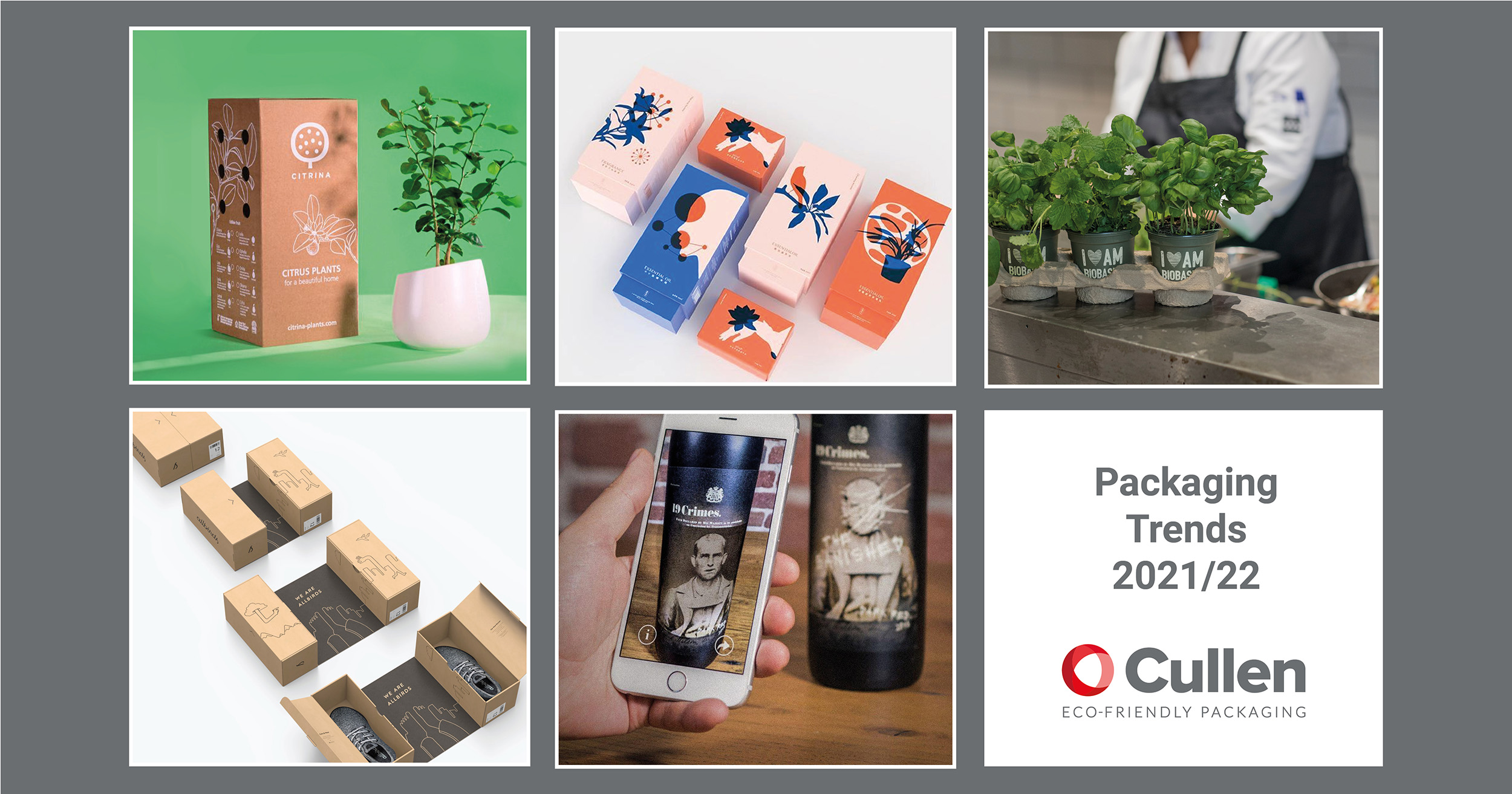
Packaging Trends 2021/22
Packaging has never been more important than in 2021. In all of the noise and change of our times, what you put your product into can make the difference between a sale for you or one for your competitor. Both display and e-commerce packaging can now heavily influence consumer choice.
So what are the current and upcoming key trends in packaging that will make sure your product won’t be left on the shelf, whether it be real or virtual?
Sustainable Packaging Design
Sustainability is becoming a focus for every responsible company and this brings a need to consider the environment in all aspects of design, manufacturing and branding. One way to begin to apply sustainability is in your packaging design, an opportunity that many brands are realising. Keeping sustainability in mind at the packaging design phase helps not only to reduce the impact of the packaging at the end of use but also throughout its life cycle. An option for making the packaging’s full journey more sustainable is to design it using ‘close fit’ principles including reducing packaging size and filler requirements.
This method of maximising performance while minimising materials reduces waste but also increases economic and environmental efficiency for transit, making it an excellent approach for e-commerce in particular. With 74% of consumers willing to pay more for sustainable packaging*, wasteful use of materials and packages any bigger than necessary are definitely out of fashion.
Minimalism
As a classic feature of design, minimalism is arguably always on trend but in a world of information overload, and with so much making a grab for our attention, the draw of the calm certainty that minimalist design offers has never been so strong. Clear and clean packaging communicates a sense of honesty and integrity alongside an idea that the product inside speaks for itself and doesn’t need its packaging to dazzle or misdirect the consumer to secure a sale.
Focusing on simplicity in your packaging can be as simple as choosing to send the message of just one area of focus: an aspect of your brand story, company history, ingredient quality or eco-credentials are all single-focus possibilities. Delivering this message with just one visual element is also a way to ensure minimalism in your packaging, as well as using single-form aspects such as only one strong colour and one font or other typography.
Tech Interactive Packaging
In 2021 82.9% of the UK population has a smartphone. That’s 55.5 million opportunities to connect more meaningfully with a customer and interactive packaging can be the means to do just that, making it one of the leading packaging trends. Augmented Reality (AR) apps and QR codes as well as social media tiles and interactive games are all ways of amplifying engagement.
Characters can be created and brought to life to encourage brand loyalty, homewares can be visualised in the customers’ homes and the in-store shopping experience can be replicated for e-commerce sales all accessed via the product packaging. More than this, though, interactive packaging offers a significant improvement in the ability to inform the customer about your product. Up-to-date content and quality details, providence and authenticity guarantees as well as sustainability and waste stream information can all be communicated without crowding the packaging itself.
Flat Graphics
The use of flat graphics in design generally, and packaging design specifically, has been a strong fashion for some time but the style looks to be reaching the peak of its pictoral powers with brand storytelling being so essential to the success of product sales and marketing. Flat graphics are the use of bold two-dimensional illustrations, using colour and contrast to create depth, to tell that story. The simple and modern style communicates the brand story quickly and without complication and confusion as well as negating the need for screeds of text.
The use of flat graphics also allows a brand to keep within the minimal style of branding allowing the product to stay looking clean and fresh. Easy to print, this form of design allows a product to stand out from the shelf and creates a strong and recognisable cue for, and connection to, the brand.
Recyclable, Plantable and Biodegradable Material
The world attention on, and therefore customer demand for, sustainability has also led packaging design to examine all its’ aspects. This has led to the trend for developing and using materials which minimise environmental impact at the end of use stage. While materials such as those interwoven with seeds to be planted post-use are at innovative stages, some of our oldest materials are already biodegradable, recyclable and compostable.
A recent McKinsey study found that in 2020 Europe had an 80% recycling rate for paperboard packaging – a much higher rate than Europe’s 40% and the USA’s 28% recycling rate for plastic. The most recognisable as recyclable and with the widest kerbside collection as such, paperboard is the most straightforward and sure material to use in packaging for the highest success rate in effective disposal – an ever-increasing priority due to the requirements of both customers and impending regulations.


